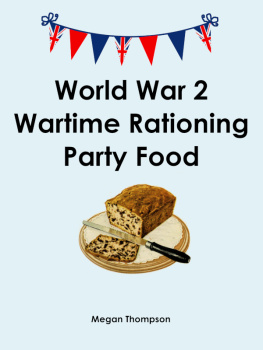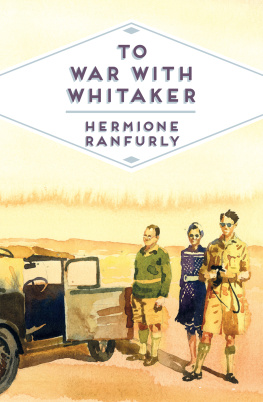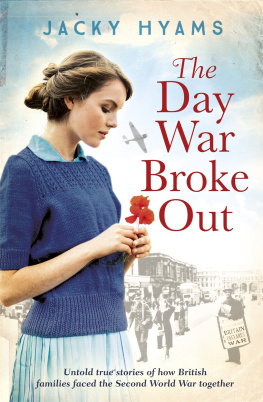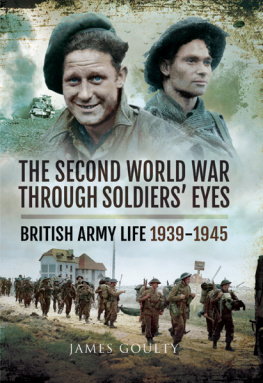Cinemas and cinemagoing in wartime Britain, 193945
STUDIES IN
POPULAR
CULTURE
General editor: Professor Jeffrey Richards
Already published
Christmas in nineteenth-century England
Neil Armstrong
Healthy living in the Alps: the origins of winter tourism in Switzerland, 18601914
Susan Barton
Working-class organisations and popular tourism, 18401970
Susan Barton
Leisure, citizenship and working-class men in Britain, 18501945
Brad Beaven
Leisure and cultural conflict in twentieth-century Britain
Brett Bebber (ed.)
British railway enthusiasm
Ian Carter
Railways and culture in Britain
Ian Carter
Time, work and leisure: life changes in England since 1700
Hugh Cunningham
Darts in England, 190039: a social history
Patrick Chaplin
Holiday camps in twentieth-century Britain: packaging pleasure
Sandra Trudgen Dawson
History on British television: constructing nation, nationality and collective memory
Robert Dillon
The food companions: cinema and consumption in wartime Britain, 193945
Richard Farmer
Songs of protest, songs of love: popular ballads in eighteenth-century Britain
Robin Ganev
Heroes and happy endings: class, gender, and nation in popular film and fiction in interwar Britain
Christine Grandy
Women drinking out in Britain since the early twentieth century
David W. Gutzke
The BBC and national identity in Britain, 192253
Thomas Hajkowski
From silent screen to multi-screen: a history of cinema exhibition in Britain since 1896
Stuart Hanson
Juke box Britain: Americanisation and youth culture, 194560
Adrian Horn
Popular culture in London, c. 18901918: the transformation of entertainment
Andrew Horrall
Popular culture and working-class taste in Britain, 193039: a round of cheap diversions?
Robert James
The experience of suburban modernity: how private transport changed interwar London
John M. Law
Amateur film: meaning and practice, 19271977
Heather Norris Nicholson
Films and British national identity: from Dickens toDads Army
Jeffrey Richards
Cinema and radio in Britain and America, 192060
Jeffrey Richards
Looking North: Northern England and the national imagination
Dave Russell
The British seaside holiday: holidays and resorts in the twentieth century
John K. Walton
Politics, performance and popular culture in the nineteenth century
Peter Yeandle, Katherine Newe and Jeffrey Richards
Copyright Richard Farmer 2016
The right of Richard Farmer to be identified as the author of this work has been asserted by him in accordance with the Copyright, Designs and Patents Act 1988.
Published by Manchester University Press
Altrincham Street, Manchester M1 7JA
www.manchesteruniversitypress.co.uk
British Library Cataloguing-in-Publication Data
A catalogue record for this book is available from the British Library
Library of Congress Cataloging-in-Publication Data applied for
ISBN 978 0 7190 9188 9
First published 2016
The publisher has no responsibility for the persistence or accuracy of URLs for any external or third-party internet websites referred to in this book, and does not guarantee that any content on such websites is, or will remain, accurate or appropriate.
Typeset in Adobe Garamond by
Servis Filmsetting Ltd, Stockport, Cheshire
STUDIES IN
POPULAR
CULTURE
There has in recent years been an explosion of interest in culture and cultural studies. The impetus has come from two directions and out of two different traditions. On the one hand, cultural history has grown out of social history to become a distinct and identifiable school of historical investigation. On the other hand, cultural studies has grown out of English literature and has concerned itself to a large extent with contemporary issues. Nevertheless, there is a shared project, its aim, to elucidate the meanings and values implicit and explicit in the art, literature, learning, institutions and everyday behaviour within a given society. Both the cultural historian and the cultural studies scholar seek to explore the ways in which a culture is imagined, represented and received, how it interacts with social processes, how it contributes to individual and collective identities and world views, to stability and change, to social, political and economic activities and programmes.This series aims to provide an arena for the cross-fertilisation of the discipline, so that the work of the cultural historian can take advantage of the most useful and illuminating of the theoretical developments and the cultural studies scholars can extend the purely historical underpinnings of their investigations.The ultimate objective of the series is to provide a range of books which will explain in a readable and accessible way where we are now socially and culturally and how we got to where we are.This should enable people to be better informed, promote an interdisciplinary approach to cultural issues and encourage deeper thought about the issues, attitudes and institutions of popular culture.
Jeffrey Richards
For BeatriceGeneral editors foreword
Unlike other works on British cinema in the Second World War, Richard Farmers book focuses not primarily on films but on the whole cinemagoing experience. Cinema going had become established as the essential social habit of the age by 1939 and it continued throughout the war to provide a source of entertainment, information, escape and emotional comfort, but under drastically altered conditions. Drawing on a wide variety of sources, including newspapers, the trade press, fan magazines, police reports, Mass-Observation, oral history interviews, industry and government records, Farmer analyses and recreates with vivid immediacy the changes effected in the cinemagoing experience by the onset of war. He charts the impact of the blackout, air raids, child evacuation, transport restrictions and the introduction of Double Summer Time on shows and audiences. He examines the influence of the government on the exhibition industry, in particular the Ministry of Information, with its programme of official film propaganda, the Ministry of Food with its Food Flashes and sweet rationing and the Treasury deriving revenue from Entertainments Tax. He analyses the changes in male and female staff, with conscription thinning their ranks, clothes rationing affecting their uniforms and women training as projectionists to replace their male counterparts. He looks at the strategies for promoting films when paper shortages meant fan magazines shrank and merged, the size and number of posters were restricted and advertising space in newspapers was reduced. There was still scope for competitions, stunts and personal appearances as managers ingenuity and inventiveness were tested to the limit. Among the many incidental details which encapsulate the era are the facts that cinemas could refuse entry to anyone not carrying a gas mask, and there was a ban on the manufacture and sale of ice cream between 1942 and 1945. This thoroughly researched, fascinating and evocative account represents a significant advance in our understanding of the phenomenon of cinemagoing. By 1946 the cinemas, which had once prided themselves in being luxurious dream palaces, had become shabby and run down. Many of the shortages and restrictions besetting them would persist until the end of the decade. But 1946 was also the year of peak cinema attendance in Britain, eloquent testimony to the captivating power of film.












